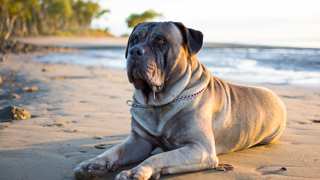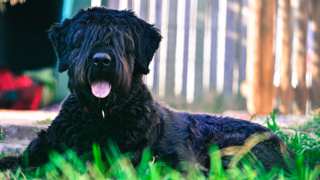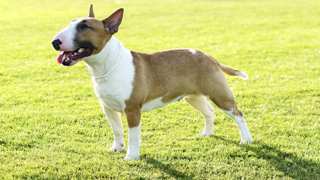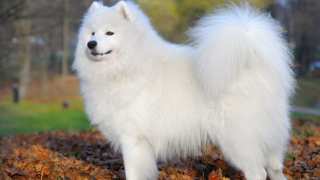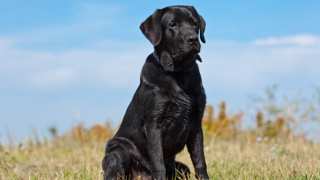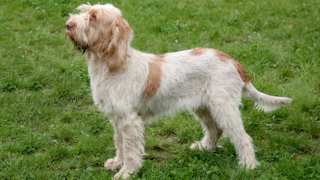Like all breeds, the Olde English Bulldogge diet will need to include food packed with protein and carbohydrates for energy, vitamins and minerals for digestive and immune health, and possibly some omega fatty acids for coat and skin wellness. This means the best Olde English Bulldogge food is the premium dry kind, as it contains balanced portions of the above-listed ingredients that will keep your OEB healthy and long-living. Some owners prefer feeding their OEBs a raw'fresh diet consisting of fresh meats, eggs, fresh vegetables and fruits, and other protein sources--but many people find such a diet for their dogs to be too expensive and time-consuming, and choose premium dry food instead. Regardless of your choice, feeding an OEB cheap, generic dog food is not recommended, as these inexpensive foods contain mostly empty "filler" ingredients that won't keep a dog healthy for the long term.
But how much of this premium food will your Olde English need? The typical adult OEB, depending on its age, size, and activity level, will need about 3½ cups of dry food per day, divided into two meals. Because their developing bodies have greater nutritional needs, Olde English Bulldogge puppy food portions are only slightly less: again depending on its age, an OEB pup will need about 2½ cups per day, divided into three meals (not two) until six months of age. For more info on feeding your OEB from puppyhood through maturity, here's an Olde English Bulldogge feeding guide:
Olde English Bulldogge Feeding ChartDog AgeDog WeightFood TypeAmountFrequency2 Months10 lbsDry (Puppy formula)0.5 cups3x/day3 Months18 lbsDry0.6 cups3x/day6 Months35 lbsDry0.8 cups3x/day9 Months45 lbsDry* (puppy/Adult)1.5 cups2x/day12 Months55 lbsDry (Adult formula)1.75 cups2x/day15 Months+65 lbsDry1.75 cups2x/day*--Around this time, transition to adult food by first mixing in a bit of adult formula with the puppy formula. Over the course of a week, with each meal add a little more adult food to the mixture, until the dog is eating it entirely.
Try and stick to the above-listed portions if possible. Though your OEB could probably eat a lot more, this breed has a high tendency for obesity--and an OEB that's constantly overfed will quickly become overweight, leading to joint, digestive, and breathing problems. You can help control your Olde English's weight by having consistent feeding and exercise schedules, by not feeding the dog table scraps, and by not leaving food in the dog's bowl all the time, thereby allowing it to eat anytime it wants. It's better to put your OEB's bowl down only at mealtimes, then pick it up 20 minutes or so after the dog begins eating.
If you're worried your Olde English Bulldogge is overweight, give the dog this test: run a hand along its side, and if you can't feel any ribs beneath the muscle, it's diet time. Reduce your OEB's daily food consumption by one-fourth, and add an extra walk or play period to its daily exercise schedule.

